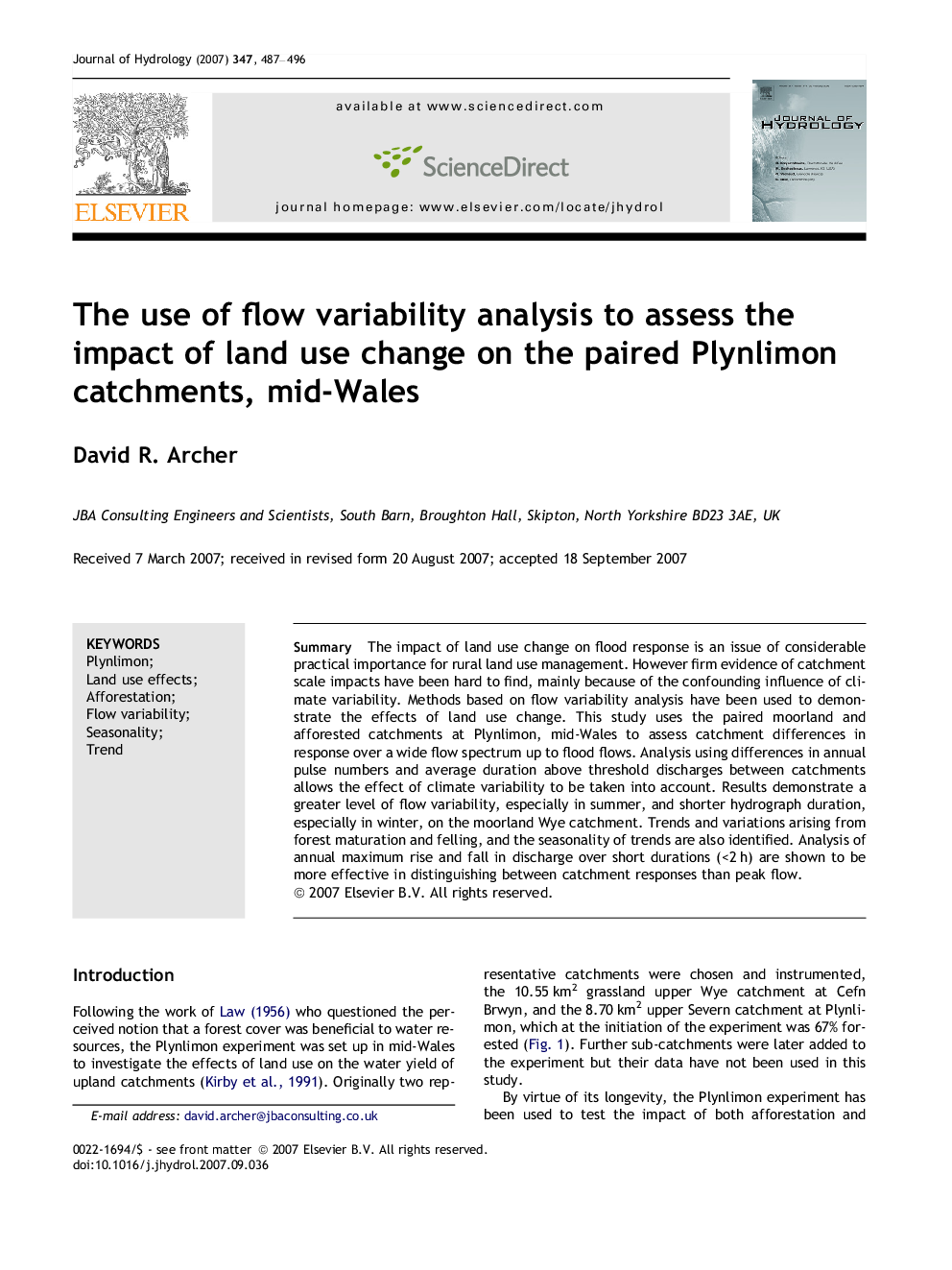| Article ID | Journal | Published Year | Pages | File Type |
|---|---|---|---|---|
| 4579585 | Journal of Hydrology | 2007 | 10 Pages |
SummaryThe impact of land use change on flood response is an issue of considerable practical importance for rural land use management. However firm evidence of catchment scale impacts have been hard to find, mainly because of the confounding influence of climate variability. Methods based on flow variability analysis have been used to demonstrate the effects of land use change. This study uses the paired moorland and afforested catchments at Plynlimon, mid-Wales to assess catchment differences in response over a wide flow spectrum up to flood flows. Analysis using differences in annual pulse numbers and average duration above threshold discharges between catchments allows the effect of climate variability to be taken into account. Results demonstrate a greater level of flow variability, especially in summer, and shorter hydrograph duration, especially in winter, on the moorland Wye catchment. Trends and variations arising from forest maturation and felling, and the seasonality of trends are also identified. Analysis of annual maximum rise and fall in discharge over short durations (<2 h) are shown to be more effective in distinguishing between catchment responses than peak flow.
